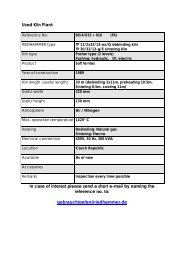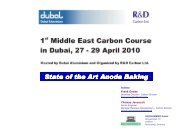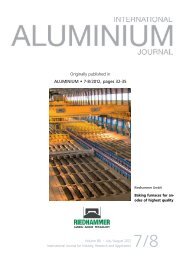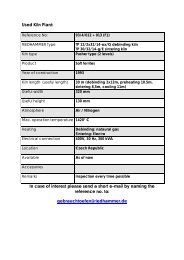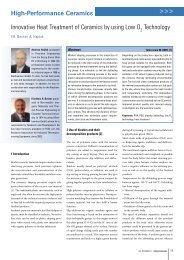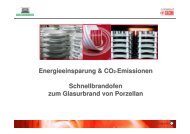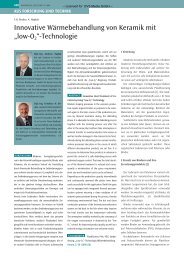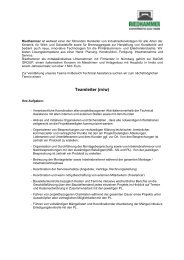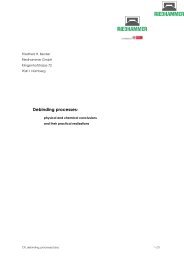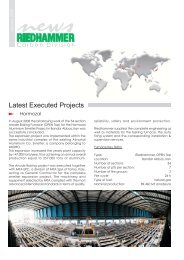Energy saving and CO2-reduction - Riedhammer
Energy saving and CO2-reduction - Riedhammer
Energy saving and CO2-reduction - Riedhammer
Create successful ePaper yourself
Turn your PDF publications into a flip-book with our unique Google optimized e-Paper software.
<strong>Energy</strong> <strong>saving</strong><br />
<strong>and</strong> CO 2 <strong>reduction</strong><br />
on continuous <strong>and</strong> intermittent kiln plants
General:<br />
<strong>Energy</strong> <strong>saving</strong> <strong>and</strong> <strong>CO2</strong>-<strong>reduction</strong><br />
More than 50% of the electricity <strong>and</strong> over 85% of the fuel, usually natural gas, required<br />
for the production of technical ceramics, are consumed for drying <strong>and</strong><br />
sintering/firing. Therefore an efficient use of energy <strong>and</strong> maximum energy <strong>saving</strong>s<br />
are the main characteristics of modern thermoprocessing plants.<br />
In a good approximation a <strong>reduction</strong> of 2 kg CO 2 can be achieved per 1 m³ of natural gas<br />
saved during production.<br />
Guidelines for an efficient use of energy<br />
1. The higher the kiln room temperature <strong>and</strong> thus the waste gas temperature<br />
upstream the heat exchanger, the better is the potential for <strong>saving</strong> energy by<br />
means of air preheating.<br />
2. The use of energy inside the kiln is to be preferred to external use. Piping losses<br />
reduce the <strong>saving</strong> potential. The efficiency strongly depends on the costs for<br />
fittings, burners <strong>and</strong> piping systems.<br />
3. The air excess adjusted on the burner should be as low as possible for the<br />
respective thermal treatment process.<br />
4. Heat losses on the external kiln wall are the main selection criteria for stationary<br />
kiln plants.<br />
2
<strong>Energy</strong> <strong>saving</strong> on continuous kiln plants<br />
Spray tower<br />
Potential: ≈ 29 % (2)<br />
Glaze dryer<br />
Potential: ≈ 6 % (2)<br />
Pre-drying &<br />
sluice air<br />
Hot water<br />
110 °C, 6 bar<br />
Potential:≈12 % (2)<br />
Potential: 3-6% (1)<br />
Warm air<br />
generation<br />
Potential:≈10 % (2)<br />
Combustion air<br />
preheating up to 450°C<br />
Potential: 8-10% (1)<br />
Casting benches<br />
Potential: ≈ x % (2)<br />
Potential: ≈ 25 % (2)<br />
Dryer<br />
(1) in % of the fuel energy input<br />
(2) Savings in % of the necessary<br />
process fuel enery<br />
3
<strong>Energy</strong> <strong>saving</strong> on intermittent kiln plants<br />
1260°C shuttle kiln<br />
1600°C shuttle kiln<br />
temperature of fumes <strong>and</strong><br />
preheated combustion air in °C<br />
800<br />
700<br />
600<br />
500<br />
400<br />
300<br />
200<br />
100<br />
Reku burners preheated combusiton air<br />
0<br />
0 100 200 300 400 500 600 700 800 900 1000 1100 1200 1300<br />
temperature inside the kiln in °C<br />
Temperature of flue gases in °C Temperature of preheated combustion air in °C<br />
4




